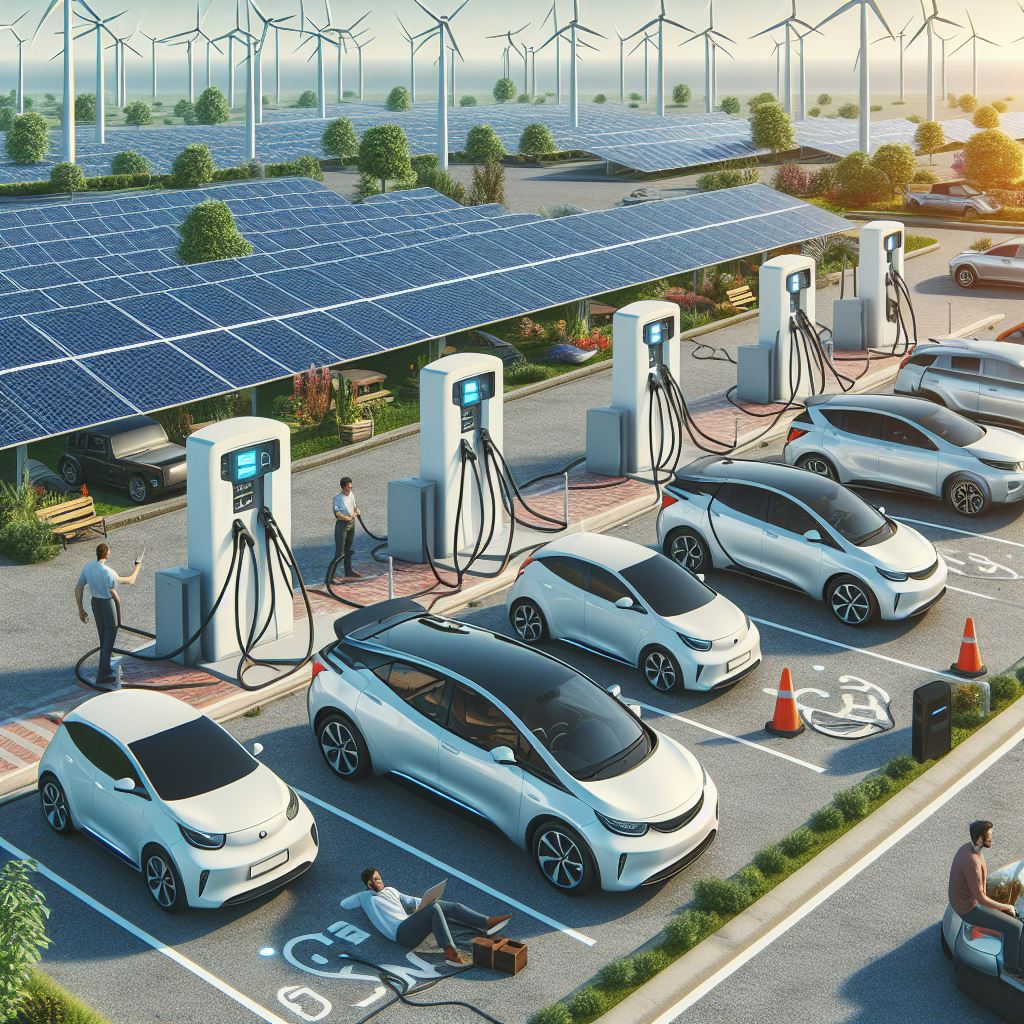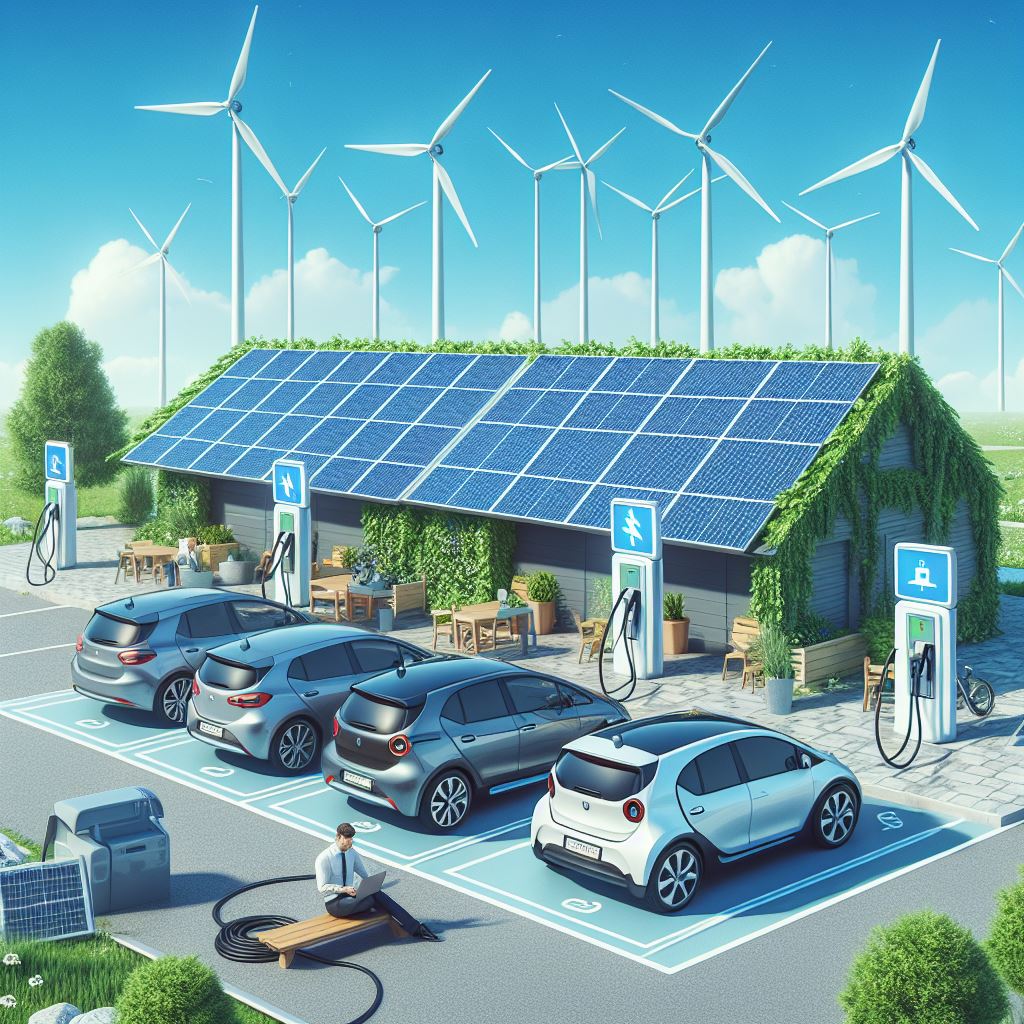The electric vehicle (EV) driven transportation revolution is in full swing, delivering to the driving population a cleaner, quieter and more sustainable driving eco-system. However, hidden behind the elegant lines and purring drives are a significant part of the EV environment that frequently get overlooked – the infrastructure which enables these vehicles to be recharged and keep moving. To be more precise, we will plug into the non-mainstream part of EV “fueling” stations and analyze the time those stations will last, the difficulties of their maintenance, and the underestimated concept of depreciation. Understanding the ‘EV Charging Station Depreciation Life’ is a key aspect when investing in electric vehicle infrastructure, providing valuable insights into the financial longevity of these integral assets.
Voltage Variants: EV Charging Equipment Lifespans Demystified
Understanding the life cycle, of an EV charging station, involves taking apart the various components with the expected years of service. Here’s a quick charge through the typical equipment and their depreciation timelines:Here’s a quick charge through the typical equipment and their depreciation timelines:
The Charging Unit Itself
The actual charging station itself – the charger unit – is built to last, with a working life of around 10 years. However, just like any electro-mechanical device, it is prone to wear and tear. Most expensive fast-charging DC models are highly technological, but even top-end models age.
Networking and Software
In a digital era, connectivity is the king and charging stations are not an exception. Networking equipment and issues are crucial for station control, billing, and user accessibility. Typically, these components usually have a shorter expected life as compared to the charging units that may need refreshing every 5 to 7 years to meet the developing industry standards and security requirements.
Civil Infrastructure
A bit less dramatic but the same important civil infrastructure, the wiring, foundation, and protective conduit, gives the station its structural support and electric backbone. This heavy-duty gear will last for around 20 years without thinking about replacements though regular inspections and repairs will have to be made along the way.
Level 2 vs. DC Fast Chargers
Charger type also influences the lifetime. A lot of electrical devices are based on the simple technology, and thus Level 2 chargers, which are more of a home charging setup, tend to be bit more robust. But, improvements in fast charging type of technology can make newer ones much better, so that they can achieve the state of obsolescence sooner.

Current Factors: What Affects the Freshness of Your Charging Station?
Understanding the EV Charging Station Depreciation Life is crucial for government bodies and private entities alike, to ensure sustainable and effective roll-out of charging networks. The value of a charging station does not only depend on the age-of-clock. Many dynamic factors play a part, determining the rate of depreciation per unit.
Utilization Rates
Stations that cater to high-traffic with business people on the move or fleet vehicles will experience faster asset depreciation because of the more frequent usage. However, a slow burning appliance operated in a rural setting is likely to barely touch its expected longevity.
Environmental and Geographical Conditions
Outdoor stations are very vulnerable to weather action, especially in severe climate situations. The higher heat, low temperature, humidity and physical stresses like salt in coastal air all age equipment prematurely.
Build Quality and Maintenance
Carelessness in material keeping amounts to increased rate of depreciation. Maintenance in general will prevent such problems as well as extend the lifespan, especially in the case of structural components that may cause corrosion or wear on electrical contacts.
Pace of Technological Advancement
The unseen destroyer of many technology related assets is the fast speed at which latest and more efficient technology at a lower cost replaces the older models. Every innovation wave can make the existing equipment outdated faster than the forecasted life spans.
Upgrade Requirements
The developments in the EV technology and user demands will lead to charging stations modernization. It can be introducing solar panels for more ecological power, implementing of updated payment systems, or conversion to work with quicker charging batteries.
Amping Up for the Inevitable End: Planning for Replacement Costs
Do not fear the ultimate depreciation, for it is a well-known enemy and can be approached through appropriate strategies. Here’s how to prep for the day you need to replace your EV charging stations:Here’s how to prep for the day you need to replace your EV charging stations:
Start with the End in Mind
Appreciate the expected life of each part and plan for it. Where possible, provide a budget for the replacement of the station’s eventual replacements at the beginning of its installation and have a clear plan for continual evaluation and forecasting.
Keep a Well-Charged Financial Buffer
Develop a fund set aside strictly for charging station replacements. This small savings account should accumulate with time, offsetting the depreciation and creating a financial buffer for later upgrades.
Opt for Longevity Assurance
An alternative would be to spend some money on extended warranties for important, high-depreciation equipment. Although an upfront cost, they insure against unforeseen costs, providing financial stability over time.
Tech-Proof Your Investment
Include the present-day technological standards at the time of installation. Starting with the latest equipment will put off the need for replacements and will make the station even more attractive for those tech-oriented customers.

Electric Vehicle Charge Stations – Fast Charging and V2G
The choice between fast charging and Vehicle-to-Grid (V2G) charging for electric vehicles is primarily dictated by individual requirements, as both types provide different benefits.
Fast charging, mainly Level 3or DC Fast Charging, is the fastest electric vehicles charging. Direct current (DC) power enables the speedy charging of an EV battery in public and commercial areas, making it well suited for long-distance traveling and rapid top-ups.
In contrast, V2G charging not only permits the charging of the EV, but also pushes the energy from the vehicle’s battery back into the grid or home (V2H). The bi-directional feature also boosts energy security where it can generate revenue or savings. Indeed, a research conducted by the University of Rochester identified that V2G chargers may save EV owners $120 to $150 per year2.
In addition, V2G technology allows the storage of inexpensive off-peak electricity or solar energy3, thus, being a green option that helps to maintain grid stability. This makes V2G especially interesting to the homes and businesses needing resilience and potential income.
In the end, though, fast charging provides convenience and speed, and V2G charging offers flexibility and likely economic value. The selection of either will be based depending on the particular needs of the EV owner and their readiness to deal with more complicated energy management.
The Final Charge: Why Understanding Depreciation Is Critical
Many businesses are interested in the EV Charging Station Depreciation Life as it helps them plan for their long-term investments in electric vehicle infrastructure. The depreciation of EV charging stations is not just an accounting issue – but the strategic foundation of the electric mobility ecosystem. The lifetime costs of the charging infrastructure need to be considered for stakeholders to be able to envision a journey towards a sustainable future that would allow innovation and accessibility.
Finally, as the world is moving towards an electric era, it is foresight that will drive sustainability and success of the industry. The understanding of the depreciation lifecycle of EV charging stations is critical not only for the maintenance of the existing fleet but also for the seamless charging of the next generation.
(FAQs) about EV Charging Station Depreciation Life
What factors affect EV charging station depreciation?
Several elements which include utilization rates, environment, quality and frequency of maintenance, rate of technological progress and changing user requirements can fasten the deterioration of EV charging stations.
How does electric car depreciation compare to combustion engines?
In the past, electric cars used to have higher depreciation than the combustion engines because of rapid technological advancement and battery degradation issues. On the other hand, as EV technology grows and the duration of the battery increases, the difference shall be reduced.
Where can I find EV depreciation bargains?
Good deals on EV depreciation can be found easily in the used car market, especially in models that have been around for a couple of years. These cars provide a lot of value because of their initial depreciation rates.
How much does EV charging cost, particularly in Malaysia?
The costs of EV charging differ greatly from place to place with home charging being much cheaper than public charging. In Malaysia, the cost depends on the electricity tariff rates, which can make home charging very cost effective when compared to petrol or diesel fueling.
What is the best charging strategy for optimal battery life?
The perfect battery life charging technique requires of avoiding full charges from 0 to 100% on routine basis, keeping the battery charge between 20% to 80% for every day use, and minimizing the impact of high and low temperatures.
Can I rely on public EV charging if I can’t charge at home?
Yes, cost-wise it needs to be planned. The public EV charging networks, especially in regions like the UK where the public EV charging infrastructure is rapidly expanding, can support those who do not have home charging options. A lot of places of employment also provide an EV charging.
What are common EV charging problems?
Most common EV charging problems are malfunctioning charging stations, charger and vehicle compatibility issues, charging speed, and station occupation by other vehicles.
How is the EV charging infrastructure developing in the UK?
The UK is gradually developing its EV charging infrastructure, and the number of public charging points has been growing significantly in recent years. Government and private sector investments focus to facilitate the increasing number of EVs on the road.
Is there a move towards charging standardization?
Yes, there is a worldwide trend in standardizing charging to facilitate compatibility and use of any type of EVs and charging networks. This involves work on plug types and communication protocols standardization.
What factors should you consider for owning an EV without home charging options?
For those preferring EV ownership but unable to access home charging facilities, the analysis should be on daily drive distance, public or workplace charging opportunities, and local charging prices. They should also look out for vehicles with bigger battery sizes since they would less frequently need to charge when away from home.
How does depreciation affect Tesla models?
The fact that Tesla models have a strong brand recognition, superior battery technology, a robust supercharger network, and over-the-air software updates that include new features makes them depreciate at a lower rate compared to other EVs.
